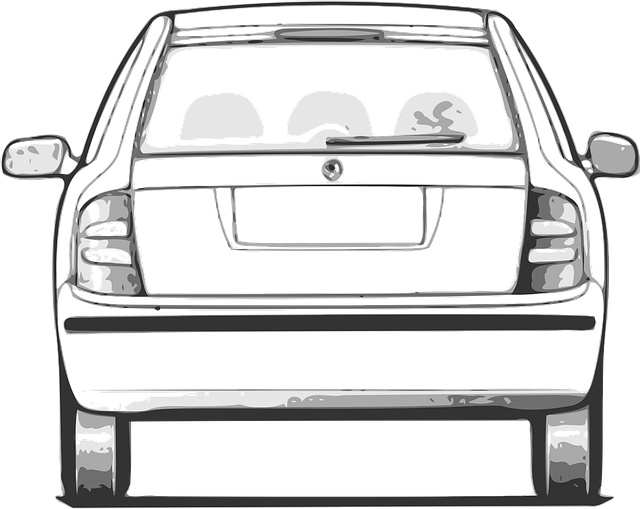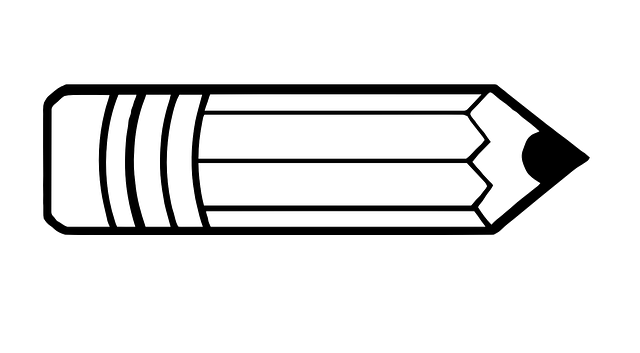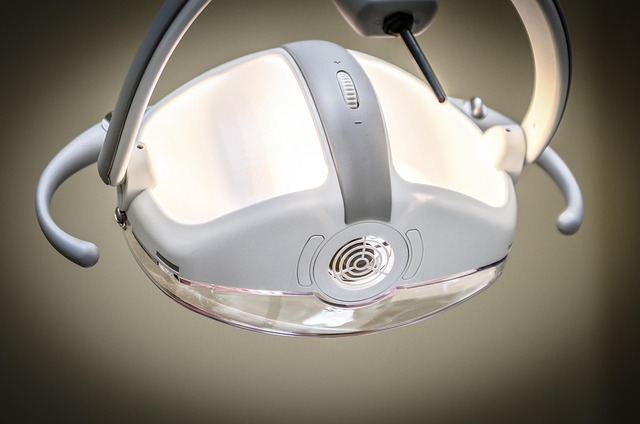Revolutionizing Frame Repair: Laser-Guided Measuring Systems
Frame repair technology has revolutionized auto collision repair, leveraging laser-guided measuring…….
In an era where structural integrity, sustainability, and cost-effectiveness are paramount, frame repair technology has emerged as a game-changer in the construction and engineering sectors. This cutting-edge approach involves the innovative repair and reinforcement of existing frames, offering a sustainable alternative to complete structure replacement. The global emphasis on reducing waste, minimizing environmental impact, and optimizing resource utilization has fueled the growth and adoption of frame repair technology.
This comprehensive article aims to explore the intricacies of frame repair technology, shedding light on its historical development, technological advancements, global impact, economic implications, and future prospects. By delving into these aspects, we will uncover how this technology is reshaping industries and contributing to a more sustainable future.
Definition: Frame repair technology encompasses a range of techniques and methodologies designed to restore and strengthen damaged or deteriorated structural frames. It involves assessing, repairing, and reinforcing critical components of a frame, ensuring its structural integrity and longevity. This process is particularly valuable for historic structures, heritage sites, and modern constructions facing structural challenges.
Core Components:
Structural Assessment: The initial step involves a thorough inspection and analysis of the frame to identify damage, weaknesses, and potential failure points. Advanced non-destructive testing methods, such as ultrasonic and thermal imaging, are employed to assess the condition of materials without causing further harm.
Repair Techniques: Depending on the extent of damage, various repair methods are utilized:
Reinforcement: To enhance the frame’s overall strength and stability, reinforcement techniques are employed:
Historical Context: Frame repair technology has deep roots in structural engineering history. Since ancient times, builders and craftsmen have employed various techniques to reinforce and restore frameworks. However, modern advancements in materials science, non-destructive testing, and specialized equipment have significantly enhanced the precision and effectiveness of frame repair.
Frame repair technology has garnered international recognition as a sustainable solution for structural restoration and reinforcement. Its global impact is evident across diverse regions, each with unique challenges and opportunities:
North America: The United States and Canada have seen a surge in the adoption of frame repair technology, particularly in historic preservation projects. Government incentives and grants promote the restoration of heritage buildings, encouraging the use of innovative repair techniques.
Europe: With a rich architectural heritage, European countries like Germany and France have embraced frame repair for their extensive historical structures. The EU’s focus on cultural conservation has driven advancements in materials and methodologies, making Europe a hub for technological innovation.
Asia Pacific: Rapid urbanization and rising construction costs have prompted developers and engineers in countries like Japan and Australia to explore frame repair. The region’s emphasis on green building practices further fuels the demand for sustainable structural solutions.
Middle East and Africa: These regions, with their unique climate challenges, are increasingly adopting frame repair technology to extend the lifespan of structures. The availability of advanced materials and specialized expertise is driving successful implementations.
Key Trends:
Sustainability Focus: The global push for sustainability has led to a growing preference for eco-friendly repair methods, minimizing waste and material consumption.
Digitalization and Data Analytics: The integration of digital technologies, such as Building Information Modeling (BIM), enables precise planning, visualization, and analysis of frame repair projects.
Specialized Materials: Advancements in composite materials, advanced polymers, and lightweight alloys are expanding the possibilities for frame reinforcement, offering enhanced strength-to-weight ratios.
The economic landscape surrounding frame repair technology is dynamic and multifaceted, influenced by various factors:
| Factor | Impact |
|---|---|
| Initial Investment: Frame repair often requires substantial upfront costs for specialized equipment, materials, and labor. However, long-term savings through reduced replacement expenses and increased structural lifespan make it a financially viable option. | High initial investment but potential long-term cost reduction |
| Market Demand: The global construction market’s growth, particularly in developing regions, drives the demand for frame repair services. Historic preservation projects and government initiatives further bolster this demand. | Positive market growth prospects |
| Competitive Landscape: Established companies specializing in structural repair and reinforcement compete with emerging startups offering innovative solutions. This competition fosters technological advancements and price competitiveness. | Competitive market with room for innovation |
| Labor Availability: Skilled labor is a critical resource, and its availability varies across regions. Training programs and specialized worker initiatives are essential to meet the skilled labor demand. | Labor market considerations impact project timelines and costs |
Investment Patterns:
Frame repair technology has witnessed remarkable technological breakthroughs, pushing the boundaries of what was once possible. These advancements have significantly improved the efficiency, effectiveness, and accessibility of frame repair services:
Advanced Materials: The development of high-performance polymers, composite materials, and lightweight metals has revolutionized reinforcement techniques. These materials offer superior strength, corrosion resistance, and flexibility compared to traditional steel.
3D Printing and Additive Manufacturing: 3D printing technology enables the creation of custom-designed structural components, such as brackets and connectors, tailored to specific repair needs. This innovation streamlines production and reduces waste.
Robotic Systems: Robotic arms equipped with advanced sensors and cameras assist in complex repair tasks, enhancing precision and worker safety. These systems are particularly useful in hard-to-reach areas or for repetitive tasks.
Digital Modeling and Simulation: Advanced digital tools allow engineers to model and simulate structural repairs virtually, predicting performance and identifying potential issues before actual construction begins.
The development and adoption of frame repair technology are guided by various policies, regulations, and legislative frameworks, ensuring safety, sustainability, and quality control:
Building Codes and Standards: Local and national building codes often include provisions for structural repair and reinforcement, specifying minimum requirements for materials, methods, and safety standards.
Environmental Regulations: Strict environmental policies in many countries encourage the use of eco-friendly repair methods, promoting sustainability and waste reduction.
Occupational Safety and Health: Regulations ensure the well-being of workers involved in frame repair, dictating training, personal protective equipment (PPE), and safety protocols.
Heritages and Historic Preservation: Governments worldwide have enacted laws to protect historic structures, fostering the use of frame repair technology for cultural heritage conservation.
Despite its numerous advantages, frame repair technology faces several challenges and criticisms that require thoughtful strategies for resolution:
Skill Gap: The specialized nature of frame repair requires a skilled workforce with advanced training. Addressing the skill gap through comprehensive training programs and educational initiatives is crucial.
Cost Concerns: Initial repair costs can be high, deterring some property owners or developers. Offering financial incentives, grants, or low-interest loans for structural repair can encourage adoption.
Material Availability: Sourcing specialized materials, especially in remote areas, may present challenges. Establishing local supply chains and distributing inventory networks can mitigate these issues.
Public Awareness: Lack of awareness about frame repair technology among the general public and property owners limits its potential. Public outreach campaigns and educational workshops can raise awareness and foster acceptance.
Case Study 1: The Restoration of a Historic Cathedral (Paris, France)
A renowned cathedral in Paris faced significant structural damage due to years of neglect and an earthquake. Using frame repair technology, engineers reinforced the ancient stone framework with carbon fiber wraps, ensuring stability while preserving its architectural integrity. This meticulous restoration project took over two years but restored the cathedral to its former glory, attracting global attention for its success.
Case Study 2: Sustainable Repair of High-Rise Buildings (Tokyo, Japan)
In Tokyo’s bustling metropolis, a high-rise building showed signs of structural fatigue. Instead of complete demolition and reconstruction, frame repair technology was employed. Engineers used advanced polymers to fill cracks and reinforce weakened concrete frames, extending the building’s lifespan by decades while reducing environmental impact. This project saved millions in construction costs and earned accolades for its innovative approach.
Case Study 3: Cultural Heritage Preservation (Delhi, India)
The ancient Red Fort in Delhi, a UNESCO World Heritage Site, underwent a major restoration initiative using frame repair technology. Local artisans and engineers collaborated to repair and reinforce the complex’s intricate stone frames, ensuring structural stability while preserving its historical charm. This project became a model for cultural heritage conservation worldwide.
The future of frame repair technology is filled with promising possibilities, driven by technological advancements, evolving trends, and strategic considerations:
Smart Materials: The integration of smart materials that can self-repair or adapt to environmental changes will be a game-changer. These materials can predict and mitigate structural issues, enhancing the longevity of repairs.
Autonomous Repair Systems: Autonomous robots equipped with advanced sensors could perform basic repair tasks, increasing efficiency and reducing labor costs.
Digital Twin Technology: Creating digital twins of structures allows for virtual monitoring and analysis, enabling proactive maintenance and precise repair planning.
Sustainable Focus Expansion: As sustainability becomes a global priority, frame repair technology will play an increasingly vital role in achieving net-zero construction goals.
Global Collaboration: Sharing best practices and knowledge across regions will foster innovation and ensure the widespread adoption of effective frame repair methods.
Frame repair technology has emerged as a powerful tool for structural integrity, sustainability, and economic efficiency. Its global impact and diverse applications demonstrate its versatility and potential to revolutionize the construction industry. By addressing challenges, embracing technological advancements, and navigating regulatory frameworks, this technology is poised to shape the future of building maintenance and preservation. As we continue to navigate the complexities of the built environment, frame repair technology will remain an indispensable component in our pursuit of a more sustainable and resilient world.
Q: How does frame repair technology benefit the environment?
A: Frame repair reduces the need for complete structure replacement, minimizing waste, energy consumption, and carbon emissions associated with new construction. It promotes the reuse and reinforcement of existing materials, contributing to a more sustainable built environment.
Q: Are there any financial incentives for adopting frame repair technology?
A: Yes, many governments and organizations offer grants, tax breaks, and low-interest loans to encourage the use of innovative structural repair methods, including frame repair technology. These incentives vary by region, so it’s essential to research local programs.
Q: Can frame repair technology be used on all types of structures?
A: While frame repair is versatile, its applicability depends on the structure’s age, material composition, and extent of damage. Historic buildings, masonry structures, and metal frames are common candidates for successful frame repair. Each project requires a tailored assessment and plan.
Q: How do I know if my building needs frame repair?
A: Regular structural inspections by qualified engineers or architects can identify signs of damage or instability. Symptoms include cracks in walls, uneven floors, sloping roofs, or doors/windows that stick. If any of these issues are present, a detailed assessment is recommended to determine the best course of action.
Q: Is frame repair technology cost-effective in the long run?
A: Absolutely. While initial costs may be higher than traditional repairs, frame repair offers long-term savings by extending the structure’s lifespan and reducing the need for frequent replacements. It also minimizes disruption during renovation, making it a financially prudent choice.

Frame repair technology has revolutionized auto collision repair, leveraging laser-guided measuring…….

Frame repair technology is transforming the automotive industry by automating intricate frame straig…….

Frame Repair Technology (FRT) revolutionizes structural monitoring by using advanced sensors and dat…….

Frame repair technology has revolutionized auto collision repairs, allowing shops to achieve factory…….

Frame repair technology, leveraging laser scanners and CAD software, has transformed car body restor…….

Frame repair technology has transformed auto restoration, achieving factory-like precision with tool…….

In the digital age, auto shops must adopt frame repair technology (FRT) to stay competitive and meet…….

Accidents and natural disasters often cause significant frame damage to vehicles, requiring precise…….